The Complete Yoga Breath
About the Dirgha Pranayama:
Dirgha means “protracted, or lasting longer than usual”. In pranayama, that means a slow, long, deep breath.
- This is considered an important foundational breath practice and is safe for everyone.
- Uses the concept of three sections of the lungs – the lower lung (diaphragmatic), mid lung (intercostal), and high lung (clavicular).
- The inhalation and exhalation begin in the lower lungs, then move to the middle lungs, then finally the upper lungs.
Other Information to Share/Know:
- When seated, a controlled lower abdomen should be maintained. Watch Mugs’ video here on how to and try it for yourself!
- If you are a yoga teacher, this pranayama should be taught in the first few classes.
We study this in the 200 hour Yoga Teacher Training and 300 hour Yoga Teacher Training in depth.
- The diaphragm is the main muscle of respiration, which explains why this breathing pattern anatomically naturally begins with BOTH the inhalation and exhalation.
- While some lineages may teach exhaling from upper lungs to lower lungs, SOYA understands that in the physical body, the diaphragm will remain the first and main muscle in respiration.
- Optimally, we want each of the various lobes of the lungs to be well exposed to the air we are breathing in. Breathing in this way will ensure most effective oxygen and carbon dioxide exchange can occur.
WATCH: Video on How Lungs Work
- There is even more reason to visualize the pattern in this way for the subtle body, because we understand that Prana rides upon the breath.
- Optimally we want each area of the lungs to be balanced since each area of the lungs distributes prana (energy) to various areas of the body according to the length of time the breath is there. The upper lungs distribute prana to the head (brain), neck, and arms. The mid lungs distribute prana throughout the upper torso. The lower lungs distribute prana to the solar plexus, pelvis and legs. Prana is equally distributed to these areas by the inhalation and exhalation begin from the lower lungs. Interestingly, when exhaling from the upper lungs first, the prana is only in the upper lungs for the shortest amount of time while the lower lungs receive the prana for the longest amount of time. This imbalance can result in an imbalance of power and less logical thinking.
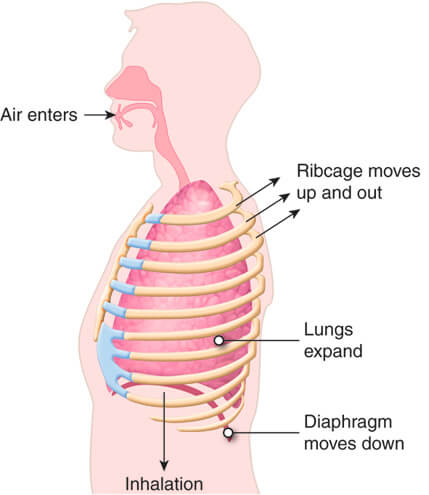
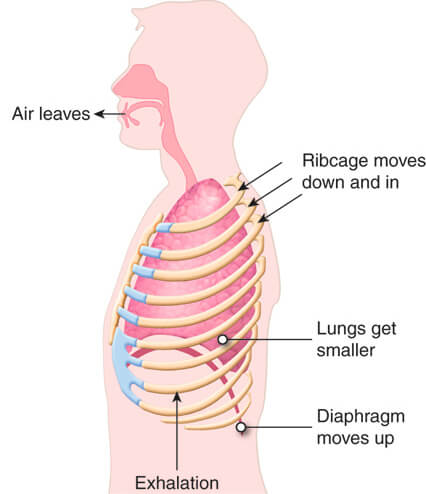
There are several movements of the muscles of the chest and neck that correspond in a complete breath, but it is the diaphragm that is considered the main muscle of respiration.
Procedure:
- Lying down, or sitting comfortably in a chair, or seated/kneeling on the floor.
- When seated, always work with a stable foundation, as in the controlled lower abdomen as taught by Mugs.
- NOTE: When lying down, the abdomen is relaxed so the experience of breathing into the lower lungs is known as “belly breathing” and is felt lower in the body than when breathing while seated.
- Breathe in and breathe out through the nose, with mouth closed and jaw relaxed.
See more here on why breathing through your nose is so important.
- The full breath entails breathing smoothly into and out of each section, in the pattern of lower-middle-upper.
- Understand it may feel awkward or difficult to breathe in this way for a time. Approach with curiosity and gentleness.
- As it becomes more comfortable, cultivate a rhythmic breath that is ever softer, smoother and longer.
Listen to this audio recording to guide you through the Dirgha Pranayama, the 3 Part Breath
Benefits:
- Ensures the most lung tissue is exposed to the air breathed in.

- Increases energy and endurance.
- Teaches breath management skills.
- Slows the rate of breath.
- Balances brain hemispheres.
- Prepares one for meditation.
- Allows the body to effectively rid itself of waste.
- Aids in balancing the body’s ph levels.
- Helps to stabilize and optimize endocrine function.
- Lowers the stress hormones and aids in relaxation.
Precautions:
- Ensure you are upright and well supported when in a seated position, otherwise the breath won’t flow effectively.
- When lying flat, keep the head level and not pushed forward too far by bulky pillows.
- Smokers should not hold the breath nor take larger than their normal breath capacity when practicing (do not expand the breath).
- Be aware of the backward type breathing called “paradoxical” breath. See Variations below to aid in correcting this.
Learn more about Paradoxical Breathing
Variations and Explorations:
- If being seated for this is challenging, lay in savasana and place your R hand on your abdomen and L hand on your rib cage.
- Support your head and knees with folded blankets for comfort.
- Be sure to relax your body as you breathe.
- It might be helpful to place a cork block, sandbag or blanket on the abdomen to see and feel the belly rise and fall with their breath – getting used to softening the abdomen can be very difficult for new students.
- To get the feel of your breath moving into the various parts of the lungs, you can explore Vibhaga Pranayama, sectional breathing, which can be done seated or lying down:
- First, place your hands on your lower rib cage level with your diaphragm (or on belly if lying down) and focus on breathing into this section for several breaths, next move the hands up to the middle rib cage and focus the breath into this area, then finally, place your hands on your chest and breath into the upper section for a time.
- Try this breath with the pranayama mudras for each section of the lungs. Check out this video from Dr. Ananda here. These can also be found on page 109 in Mug’s book, Letters from the Yoga Masters, as described to Hari by Swami Gitananda Giri, Dr. Ananda’s father.
Sources:
MedlinePlus [Internet]. Bethesda (MD): National Library of Medicine (US); [updated Jun 24; cited 2020 Jul 1]. Available from: https://medlineplus.gov/.: Diaphragm and Lungs.
Cenveo – Drawing Diaphragm, rib cage and lungs during inhalation – English labels” by Cenveo, license: CC BY
Cenveo – Drawing Diaphragm, rib cage and lungs during expiration – English labels” by Cenveo, license: CC BY
What to know about nose breathing vs. mouth breathing
SOYA 200 hour Yoga Teacher Training Manual
Letters from the Yoga Masters, by Marion Mugs McConnell
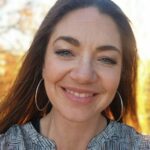
Rebecca (Becky) is the director of the South Okanagan Yoga Academy since Mugs has retired in 2023. Initially graduating from her 200 hour Yoga Teacher Training in 2010, Becky is now an E-RYT500 teacher and a lead faculty member. She lives in Strathmore, Alberta and offers community and private yoga and meditation classes in person and online, as well as various workshops and yoga teacher trainings in Alberta, Mexico and Online. Her passion is sharing how yoga practices and philosophy can be accessible, relatable and applicable in transforming our lives.
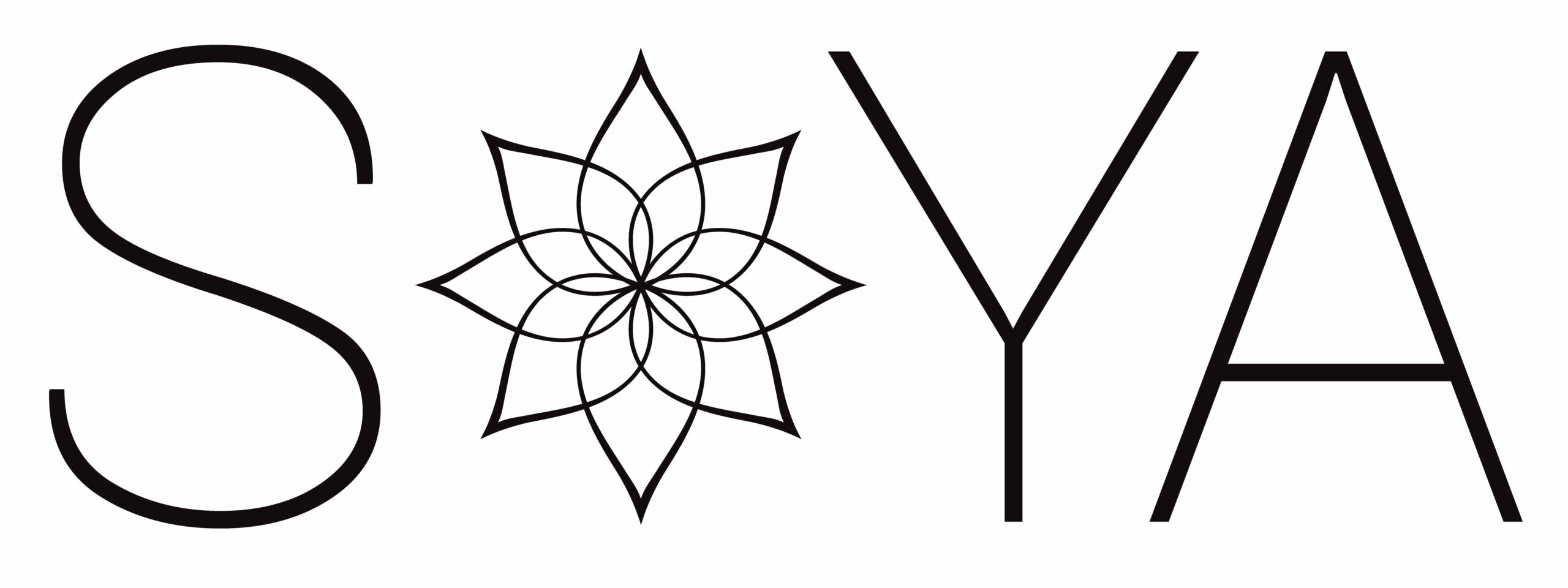
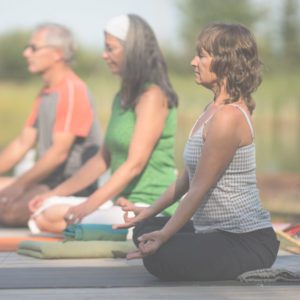
Recent Comments